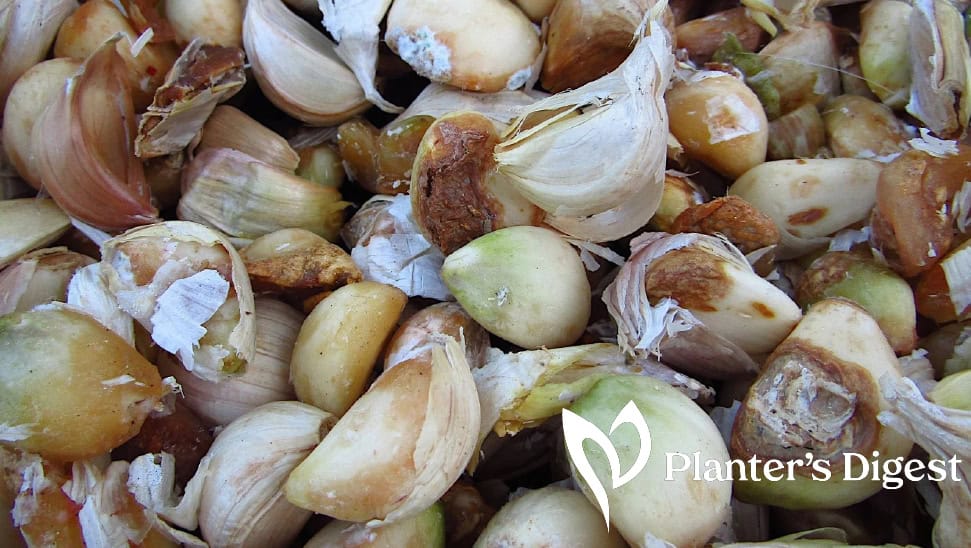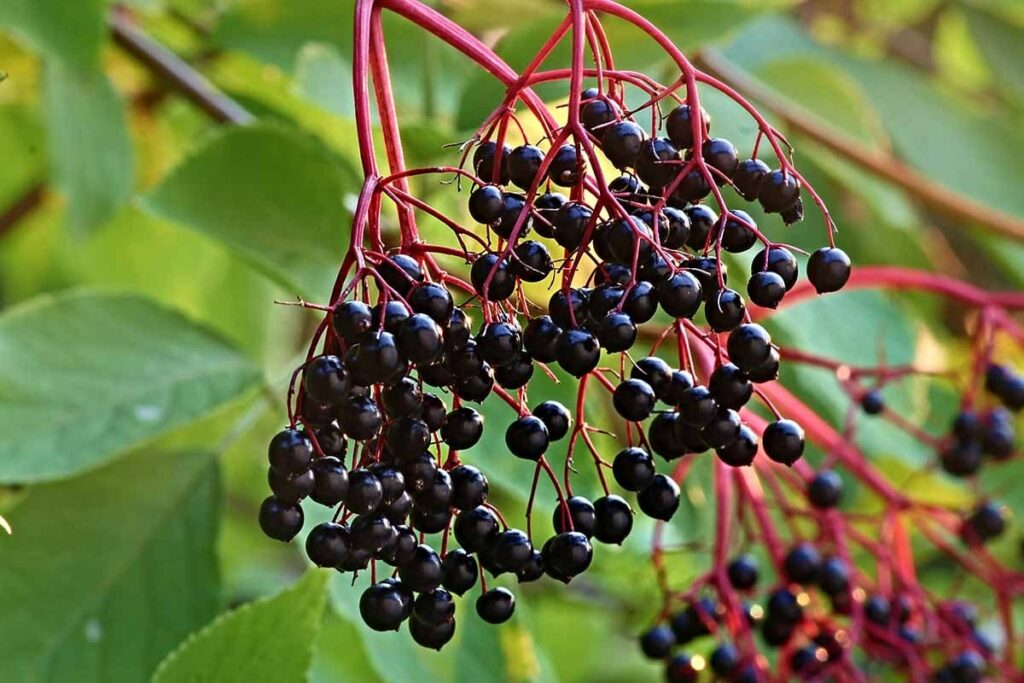Ever found yourself doing a double-take at your garlic cloves because they’ve mysteriously transitioned from their usual pungent white to an unexpected shade of blue or green? You’re not alone.
This culinary curveball has puzzled many home cooks and garlic enthusiasts alike. But fear not! We’re about to peel back the layers on this garlic enigma.
We’ll uncover the science behind these color changes and answer the pressing question: can you still use your colorful cloves in your cooking? Let’s find out!
Why does garlic turn blue or green?
Chemical Reactions
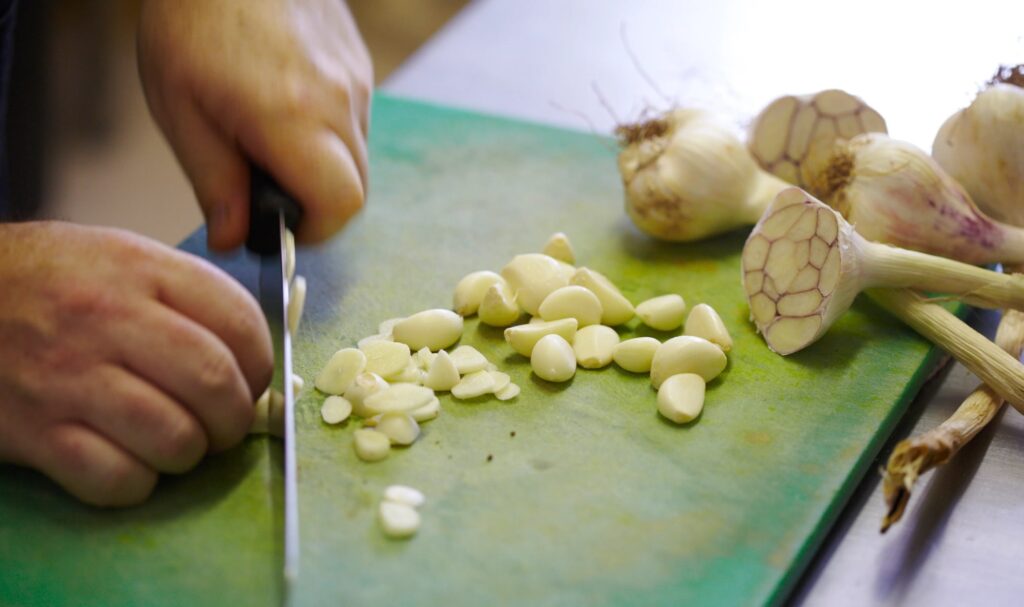
When you chop or crush garlic, you’re not just preparing an ingredient; you are kick-starting a fascinating chemical symphony!
The moment you slice through that clove, enzymes leap into action, transforming sulfur-packed amino acids into an array of complex, aromatic compounds. But that’s just the prelude.
This magical transformation can lead to a colorful surprise—a shift in the garlic’s hue. When these compounds interact with acids like vinegar or lemon juice, or when they contact certain metal utensils, the garlic can take on blue or green pigments.
How to prevent:
Keep your garlic looking pristine by mixing it in glass or ceramic bowls when you’re adding a splash of acid.
And a little chef’s secret? Hold off on introducing those acidic ingredients until later in the cooking process. This strategy lets your garlic shine, free from any surprise color changes.
Age of the Garlic
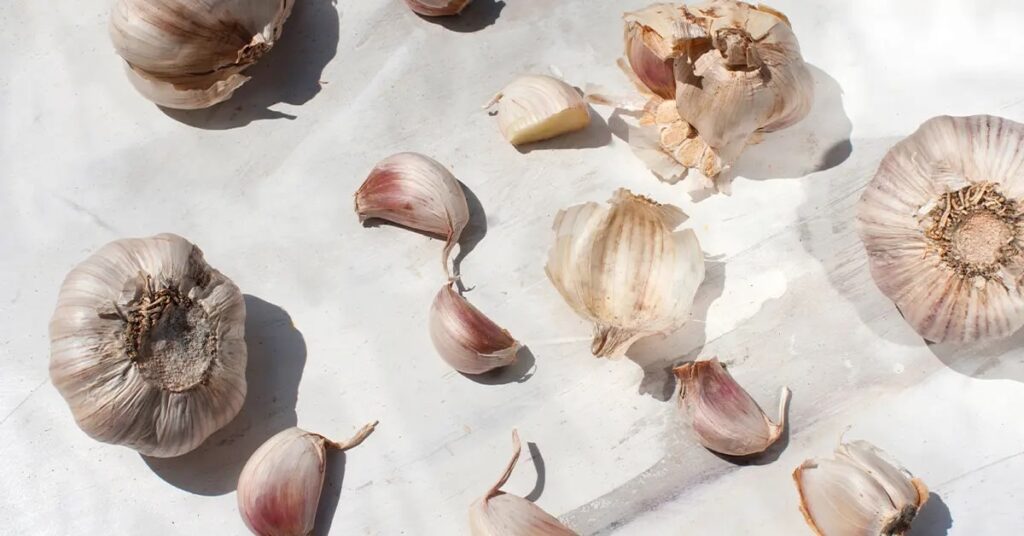
As garlic gets older, it loses some of its punch and undergoes a series of chemical changes. The conditions it’s kept in, like how warm it is or how much light it gets, play a big role in these transformations.
Over time, these factors can speed up this chemical makeover in garlic, raising the chances of it changing color.
This aging process not only tweaks what’s inside the garlic but might also lead to unexpected pops of color, depending on the setup.
How to prevent:
Keep your garlic fresh and looking good by storing it in a cool, dry spot away from the sun’s rays. This simple step helps slow down the aging process that might otherwise lead to discoloration.
Variety of Garlic
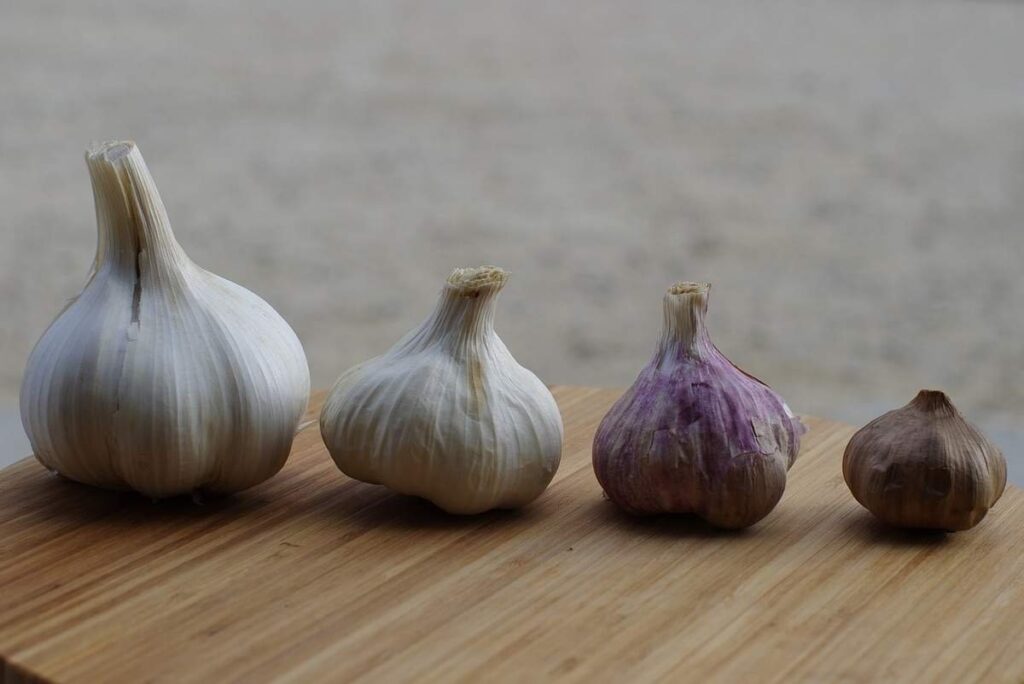
Not all garlic is created equal, especially when it comes to changing colors. The genetic makeup of different garlic varieties plays a crucial role in this intriguing phenomenon.
The key lies in the sulfur compounds present within the garlic. These compounds play a big role in determining whether your garlic might surprise you with shades of blue or green.
How to prevent:
Opt for garlic varieties known for their stability, such as ‘softneck’ types (e.g., ‘Artichoke’ or ‘Silverskin’).
Not only are these types known for their stable nature and less reaction to acids, but they also pack a milder flavor, which could mean fewer surprises in the color department.
pH Levels
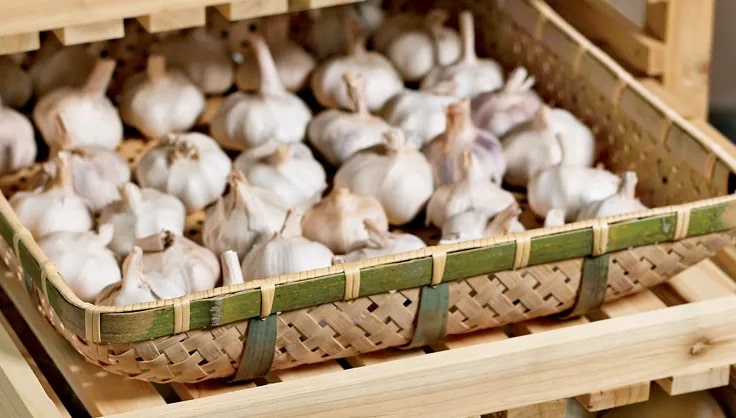
The way garlic changes color can depend a lot on where it’s stored or cooked. A major influence on this transformation is the pH level of its environment.
When garlic finds itself in a place that’s either quite acidic or very alkaline, its natural color can start to shift.
This ability of garlic to respond to pH levels is quite fascinating. It shows that even small changes in its surroundings can lead to surprising and vivid color changes.
How to prevent:
Keep garlic’s colors true by playing the pH-balancing game when you cook. If you’re dealing with an acidic dish, a tiny sprinkle of sugar or baking soda can work wonders in keeping things neutral.
Another trick is to hold off on adding acidic buddies like lemon juice or vinegar until after the garlic has had its time to shine. This little timing tweak helps the garlic’s sulfur compounds stay steady, dodging those pesky color changes.
Exposure to Metals
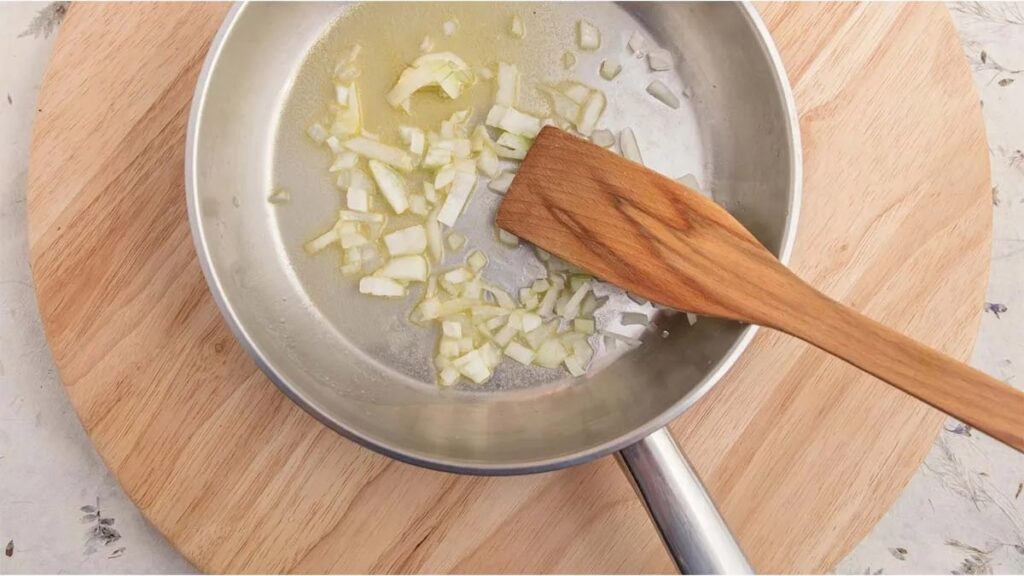
When you cook, mash, or store garlic in containers made of certain metals like copper or aluminum, something curious happens.
The metal ions from these containers interact with the sulfur compounds in the garlic, sparking a change that can turn your garlic a surprising shade of blue or green.
How to prevent:
To keep your garlic looking and tasting its best, go for stainless steel, glass, or ceramic when it comes to your kitchen gear.
These materials play nice and don’t mess with your garlic, unlike aluminum or copper, which can dress your cloves in unexpected colors.
How to Stop Your Garlic From Going Blue or Green
Refrigerate properly
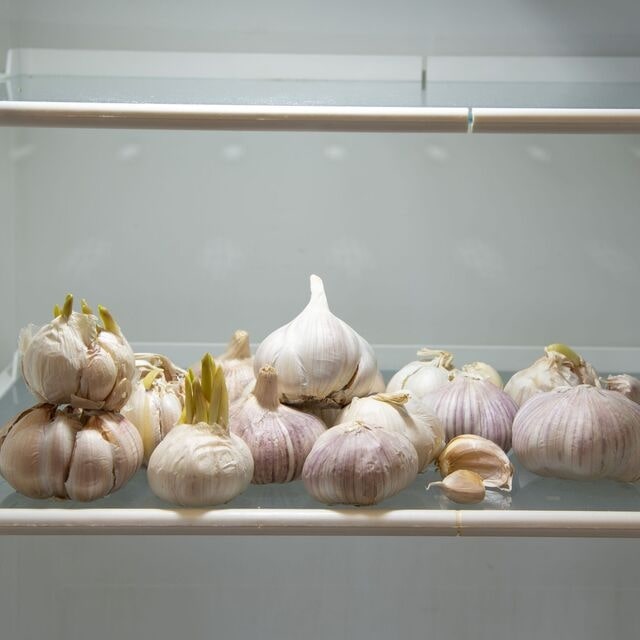
Keep your chopped or peeled garlic fresh as a daisy by giving it a cool refuge in the fridge. Tuck it into an airtight container to shield it from the bustling world of fridge smells and moisture.
Don’t forget to slap a date on the container, as this will help you keep track of its freshness. Aim to use it within a few days to ensure you’re enjoying it at its peak quality for both flavor and safety.
Blanch before use
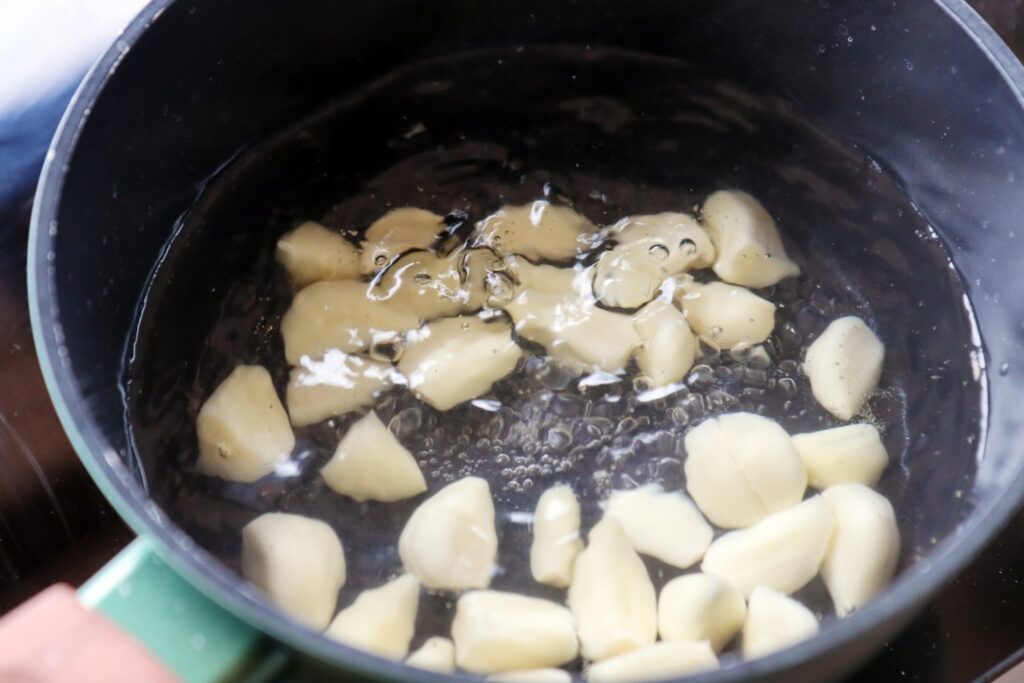
A quick blanch of garlic cloves in boiling water for a few seconds can greatly reduce discoloration, especially with minced garlic.
Give those cloves a swift dip in a boiling water bath for just a moment, then swoosh them into ice-cold water to stop them from cooking further.
This shock treatment can help maintain the garlic’s pristine white hue and keep the texture snappy. Perfect for minced garlic that wants to stay young and fresh!
Use acidulated water for storage
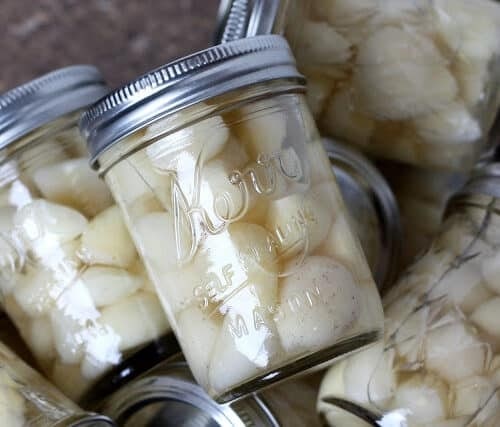
If you plan to temporarily store peeled or chopped garlic, Give it a little soak in a bubbly bath of water with a dash of vinegar or a squeeze of citrus juice.
The acidulated water provides an environment that helps maintain garlic’s natural color and can even slightly extend its freshness.
Just a heads-up: this is only a quick fix! Use your garlic soon, as this isn’t a method for the long haul. Enjoy that vibrant garlic while it’s still in its prime.
Dry properly after washing
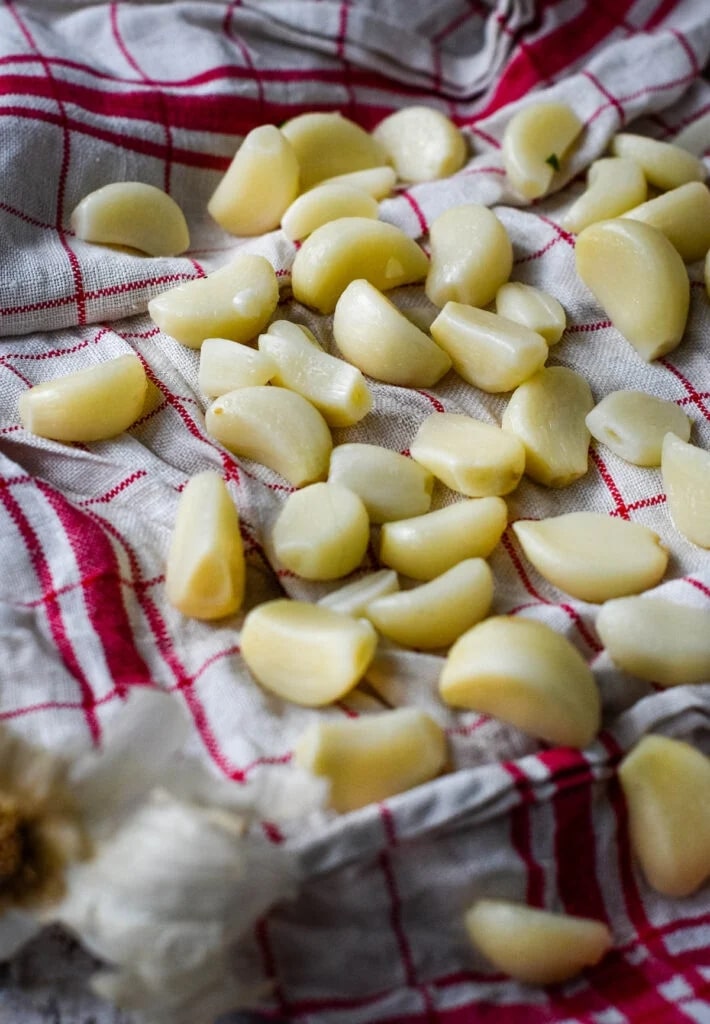
Remember, when it comes to storing garlic, moisture is like that uninvited guest at a party—definitely not welcome! If your garlic has taken a little shower or gotten a bit damp, it requires proper drying.
Give it a gentle pat down with a towel or let it lounge in a breezy spot until it’s completely dried off. Doing this gets it in tip-top shape for storage and stops it from throwing a color-changing tantrum.
Store in a cool, dry place
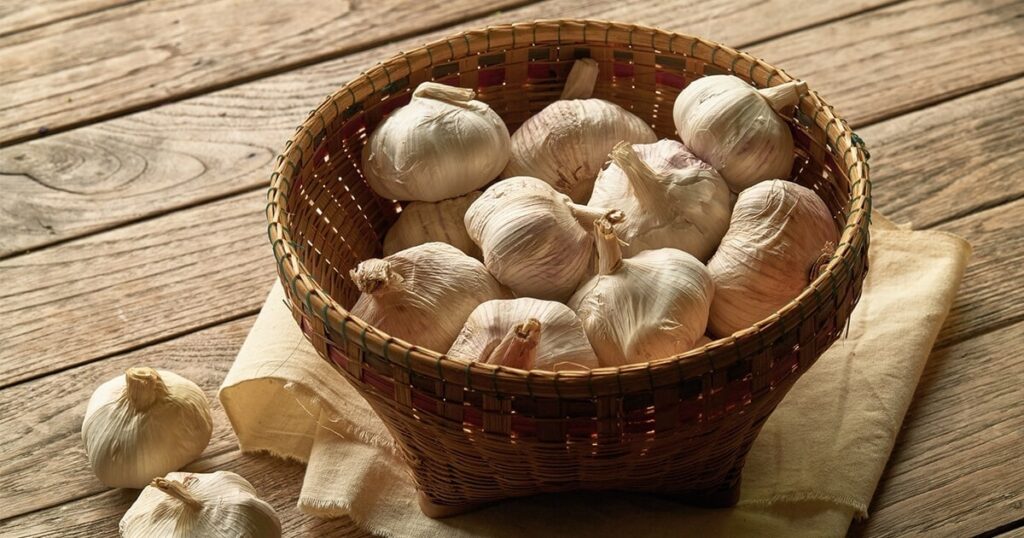
When dealing with whole unpeeled bulbs, think of a vampire-hunting kit—keep them in a place that’s as cool, dry, and certainly not sunny.
Whether you’re using a net, a mesh bag, or even a paper bag with ventilation holes, these storage methods help maintain the bulb’s integrity, keeping it aromatic and robust for when you need to ward off culinary blandness (or perhaps a vampire or two).
Freeze for longevity
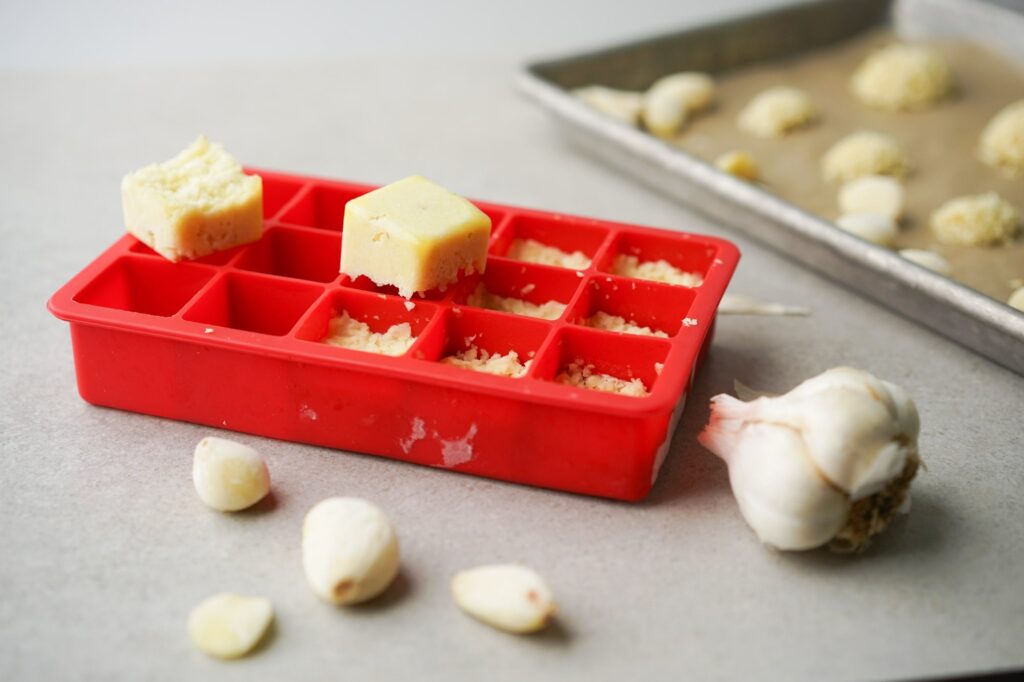
For longer storage, freezing garlic is the way to go. Properly packaging garlic in airtight containers or heavy-duty freezer bags before placing it in the freezer can significantly prolong its shelf life while maintaining its flavor profile.
For a clever twist, try freezing garlic as a puree or mixed with oil in ice cube trays. This trick gives you perfectly portioned bursts of garlic flavor ready to pop into your next cooking escapade.
With this method, you’ll always have garlic at the ready, making your kitchen prep a breeze!
Create garlic powder
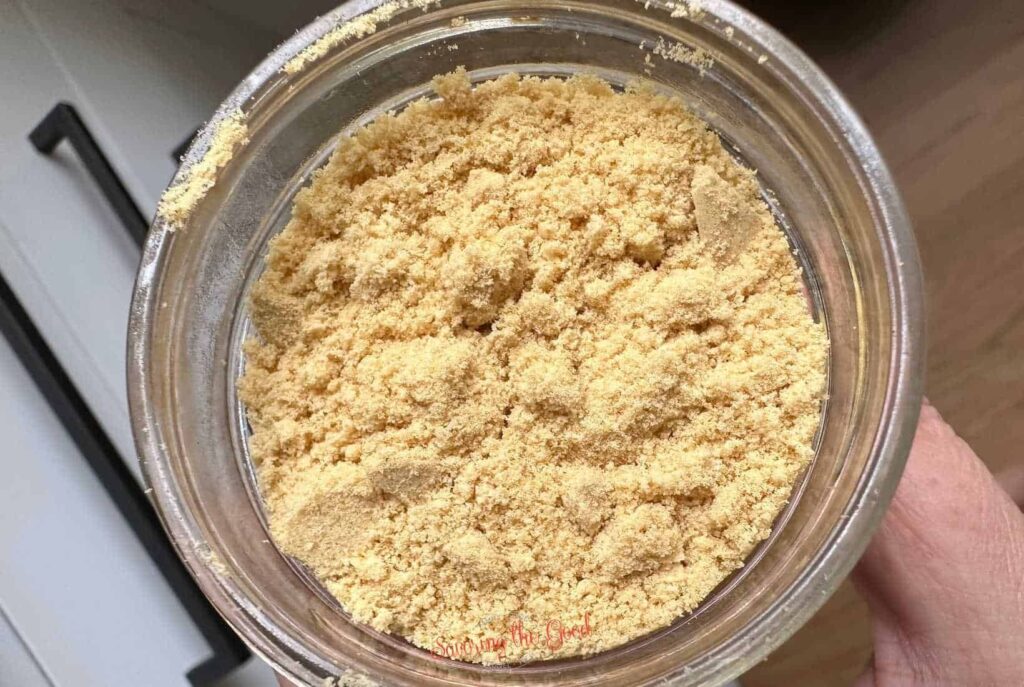
You can whip up your own garlic powder with ease by peeling, slicing, and drying your garlic until it’s as crisp as a fall leaf. Then give those pieces a quick whirl in your spice grinder, and you’ve got magic in the form of powder.
Store your homemade garlic powder in a cool, dark container. This method is the best way to preserve garlic because it locks in the flavor for months, ensuring you always have this kitchen staple at hand, ready to elevate your cooking at a moment’s notice.
Make garlic paste
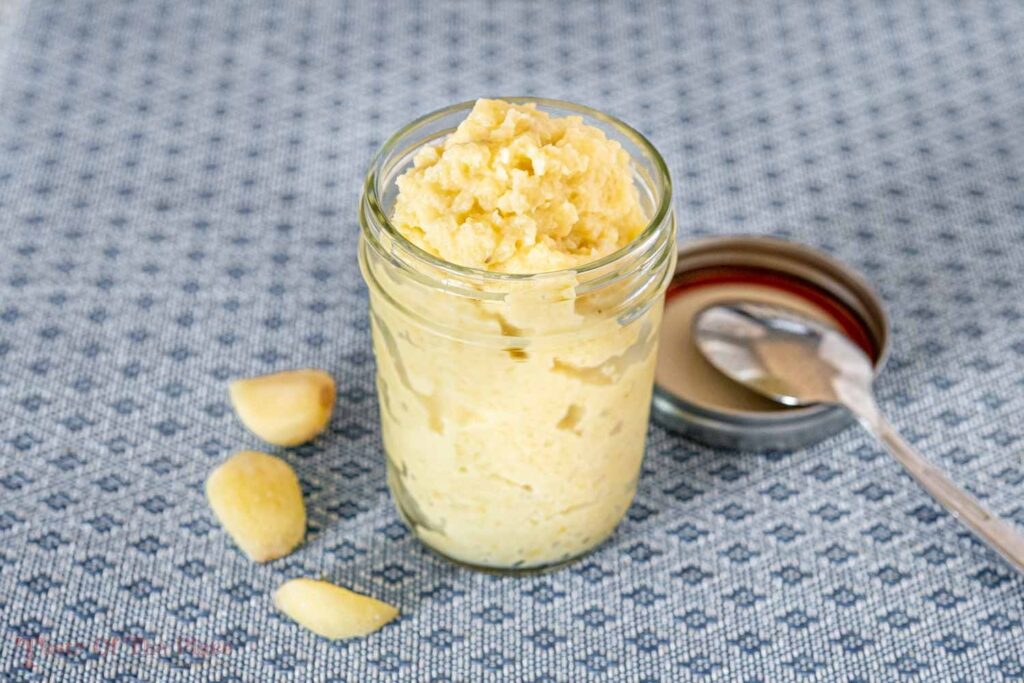
Transforming garlic into a smooth garlic paste is a game changer! Not only does it prevent that pesky blue or green discoloration, but it also means you’ll always have a ready-to-use flavor booster on hand.
Start by peeling the garlic cloves—this helps to remove any chance of discoloration. Next, toss them into a blender with a small amount of olive oil and a pinch of salt. Blend until you achieve a smooth, aromatic paste.
For easy storage, you can seal the paste in airtight containers if you plan to use it soon.
Can I eat blue and green garlic?
You can eat blue and green garlic. However, the presence of unusual colors in garlic could also be due to excessive age or improper storage conditions, which might impact flavor and texture.
Always ensure the garlic does not have a bad odor or mold, which are indicators of spoilage.
FAQs
Does blue or green garlic taste different from normal garlic?
There is typically no significant taste difference in garlic that has turned blue or green when compared to normal garlic. Garlic that sports these funky colors usually tastes just as good as its plain counterpart.
This color change is just a harmless chemical reaction between the sulfur in the garlic and a tiny bit of acid or copper, often from your kitchen utensils or pots.
So if your garlic pulls a color switch on you, don’t be alarmed. It hasn’t spoiled nor lost its punchy flavor. Go ahead and use this colorful garlic in your dishes just like you would with regular garlic—it’ll perform its culinary magic just the same!
Will cooking affect the color of blue or green garlic?
When you cook garlic that has turned futuristic shades of blue or green, don’t expect those colors to fade easily. The compounds that cause this color shift are pretty tough, holding on even as the heat rises.
Depending on your cooking method and the other merry ingredients joining the garlic in your dish, these bold, blue, or green hues might soften somewhat, blending more subtly into the mix.
Can the color change in garlic occur with both fresh and stored garlic?
This unexpected color change can occur in garlic regardless of its age. Whether you’ve just harvested fresh cloves from the garden or have garlic that’s been resting in your pantry for weeks, both are susceptible to turning blue or green.
Is there a nutritional difference in garlic that has turned colors?
Extensive studies show that there is no significant nutritional difference between colored and normal garlic. The change in color is just a harmless chemical reaction and doesn’t affect the vitamins, minerals, or antioxidants in the garlic.


